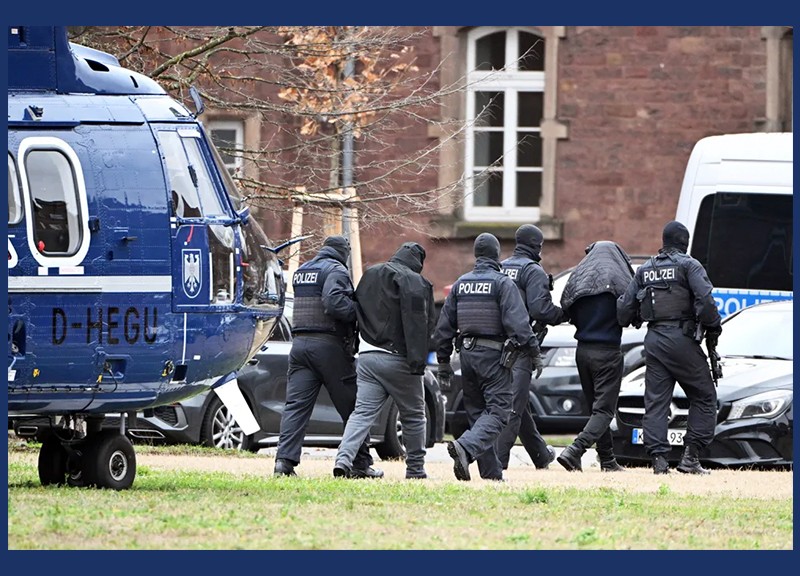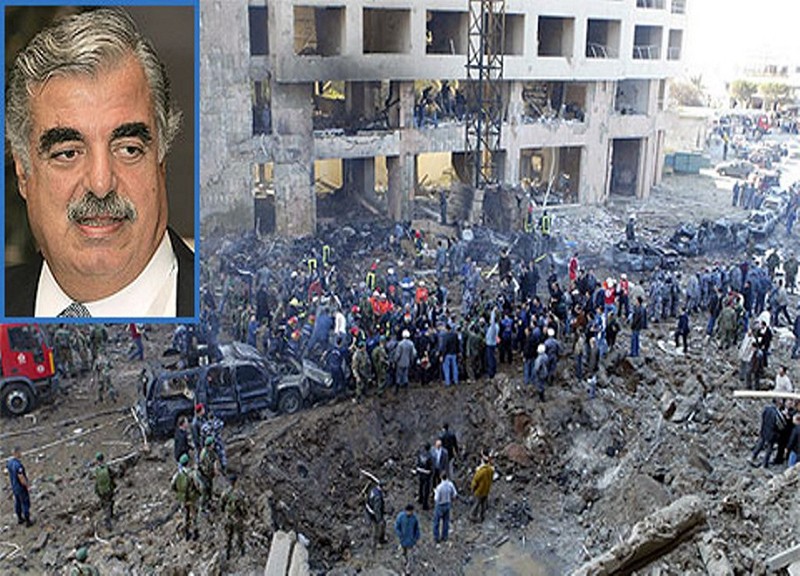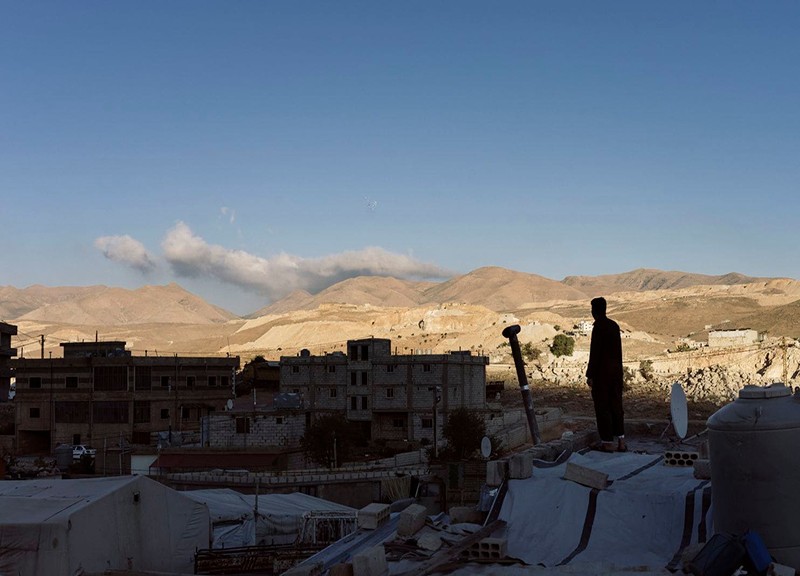
The militant group seems to be hoping that its ideology, cause, and brand will go global the way the Islamic State’s did.
By Colin P. Clarke Foreign Policy
The scale and sophistication of the Oct. 7 Hamas terrorist attacks have led many counterterrorism analysts to revisit their assumptions about the group’s intent and capabilities. And one of the biggest questions many have is whether the group, which has never launched a successful attack abroad in its 36-year existence, could transform into a global threat, rather than simply remain a regional one.
On Thursday, seven individuals were arrested in Denmark, Germany, and the Netherlands on suspicion of preparing to carry out terrorist attacks against Jewish institutions in Europe. Three suspects detained in Berlin and another in Rotterdam are alleged Hamas members with links to the Qassam Brigades, Hamas’s military wing. According to German authorities, the suspects were tasked with locating a preexisting weapons cache, which would facilitate future attacks. The orders allegedly came from Hamas leadership based in Lebanon.
In the United States, FBI Director Christopher Wray has warned since the Oct. 7 attacks about the elevated terrorism threat level, stating before the U.S. Congress: “We assess that the actions of Hamas and its allies will serve as an inspiration the likes of which we haven’t seen since [the Islamic State] launched its so-called caliphate years ago.” The Europeans are also worried. EU Home Affairs Commissioner Ylva Johansson recently stated: “With the war between Israel and Hamas, and the polarization it causes in our society, with the upcoming holiday season, there is a huge risk of terrorist attacks in the European Union.”
From its inception, Hamas has always been something of a duality. The group is both a nationalist movement dedicated to establishing a Palestinian state and a violent Islamist resistance movement, with an ideology derived from the Muslim Brotherhood, originally dedicated to destroying the state of Israel, according to its founding organizational charter. (The charter was revised in 2017 to allow for the possibility of a two-state solution, but the group remains committed to “the full and complete liberation of Palestine, from the river to the sea.”) So while its ideology is infused with references to jihad, it was not the global jihad embraced by al Qaeda, the Islamic State, or their respective affiliates worldwide. Accordingly, the Islamic State has repeatedly denigrated Hamas as apostates, criticizing the group for its involvement with elections and for depending so heavily on Shiite Iran for support and patronage.
Though Hamas has never launched a successful attack abroad, there have been several disrupted plots tied to Hamas. In 1997, three individuals arrested in New York City for allegedly planning an attack on the subway were investigated for possible links to Hamas. In November 2003, a Gaza-born Canadian citizen named Jamal Akal was arrested by Israeli authorities as he attempted to leave Gaza and travel back to Canada, where he was allegedly plotting to carry out terrorist attacks against Jewish communities in the United States and Canada. Akal pleaded guilty and served four years in prison in Israel before being released back to Canada, though he maintained that he had been tortured into signing a confession, and his lawyer said Akal accepted a plea deal because he believed conviction was unavoidable. Israel denied that Akal was mistreated.
Hamas does not have a prohibition against killing Westerners—its indiscriminate suicide attacks have killed citizens of Western countries before—but it has mostly eschewed targeting Western interests in favor of focusing on attacking Israel at home. Hamas has maintained long-standing fundraising and propaganda dissemination networks in the West, though, including in the United States. The Holy Land Foundation was a Hamas-linked charity based in Texas that was convicted in 2008 of providing material support to Hamas, funneling more than $12 million to the group over the years.
As a member of Tehran’s “axis of resistance,” Hamas enjoys Iranian largesse in the form of financing, training, and logistical support, provided by the Islamic Revolutionary Guard Corps’ Quds Force. Since the early 1980s, Iran helped build Lebanese Hezbollah into a comprehensive terrorist organization with global reach and top-tier capabilities that has launched terrorist attacks in Latin America, Europe, and Asia. Tehran could now choose to do the same with Hamas, even assisting the group with developing an external operations attack network, as it did with Hezbollah.
There seems to be growing support in the Arab world for the Iranian regime on the heels of Oct. 7, with a recent Arab Barometer poll showing that Iran’s supreme leader, Ayatollah Ali Khamenei, enjoys approval ratings that matched or exceeded that of Saudi Crown Prince Mohammed bin Salman and Emirati President Mohammed bin Zayed. Popular support in the Arab world matters, especially when it crosses sectarian lines, because it can provide cover for the Iranian regime if it decides to begin turning Hamas into the next Hezbollah.
For years leading up to the horrific attack on Oct. 7, the conventional wisdom was that Hamas was content with reaping the financial benefits of its arrangement in Gaza—where Israeli Prime Minister Benjamin Netanyahu’s government and others encouraged and facilitated Qatari cash infusions for economic development—and thus that it had little interest in attacking Israel.
But Oct. 7 may have been a turning point for the group, and it could begin shifting its attention to targets outside of its immediate environs. Speaking in early December on Al-Aqsa television, senior Hamas official Sami Abu Zuhri called for attacks against Israel’s allies, specifically the United States and the United Kingdom. “We need violent acts against American and British interests everywhere, as well as the interests of all the countries that support the occupation,” Zuhri said.
As terrorism scholar Tore Hamming recently observed, there is a range of factors that are likely to contribute to the trajectory of the terrorism threat posed by Hamas in the West: the length of the conflict between Israel and Hamas; the scale and intensity of Israel’s offensive in Gaza; and the degree of support that Western nations provide to Israel. These factors will be considered alongside the daily images of suffering and destruction streaming out of Gaza each day as the civilian death toll continues to climb.
Hamas seems to be hoping that its ideology, its cause, and its brand will go global in much the same way the Islamic State’s did. Its propaganda is resonating with broad swaths of Western publics, especially younger generations and many university students who have turned out in large numbers at anti-Israel demonstrations and protests. Even if just a small fraction of these individuals become radicalized, it increases the likelihood of a lone-actor attack.
Hamas is a different organization after the Oct. 7 attacks, and intelligence officials and security services should adapt accordingly. As the holiday season enters full swing, a range of soft targets—from synagogues to Christmas markets—will remain vulnerable to potential attacks either inspired or directed by Hamas, which has openly declared its desire to ensure that the war does not remain contained to Gaza but also threatens Israel and its supporters worldwide.














